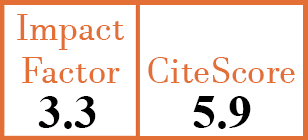Full Papers
Long-term safety and effectiveness of tumour necrosis factor inhibitors in systemic sclerosis patients with inflammatory arthritis
M.A. Omair, V. Phumethum, S.R. Johnson
CER5101
2012 Vol.30, N°2 ,Suppl.71
PI 0055, PF 0059
Full Papers
Free to view
(click on article PDF icon to read the article)
PMID: 22691210 [PubMed]
Received: 14/09/2011
Accepted : 21/12/2011
In Press: 29/05/2012
Published: 31/05/2012
Abstract
OBJECTIVES:
To assess the long-term safety and effectiveness of tumour necrosis factor (TNF) inhibitors in the treatment of systemic sclerosis (SSc) patients with inflammatory arthritis.
METHODS:
SSc patients who fulfilled the ACR criteria and had inflammatory arthritis followed in The Scleroderma Programme at the Mount Sinai and Toronto Western Hospitals, Toronto, Canada who received a TNF inhibitors for 12 months or more were retrospectively reviewed. Safety outcomes included development of TNF inhibitor related side effects, malignancy and death. Effectiveness outcomes included swollen joint count, tender joint count, skin score, and self-reported pain score at 12 months, compared to baseline.
RESULTS:
Ten SSc patients were identified: 7 (70%) were female and 6 (60%) had diffuse disease with a median skin score of 6. Six patients (60%) had ILD. At 12 months, the median swollen joint count and tender joint count significantly decreased from 10 to 0 (p<0.01) and 15 to 3 (p=0.02), respectively. The median pain score decreased from 6 to 3.5 (p=0.10). The median skin score remained unchanged at 6 months. The FVC and DLCO changed from 86% and 65% respectively, to 80% and 75% respectively. One patient developed uncomplicated herpes zoster. After 30 months, 3 patients (30%) developed malignancy. No death or other adverse events were observed.
CONCLUSIONS:
TNF inhibitors appear to be effective in the treatment of SSc-associated inflammatory arthritis. Skin score and lung function did not change significantly with therapy. However, malignancy occurred in one third of patients. Further studies are required to confirm these findings.


